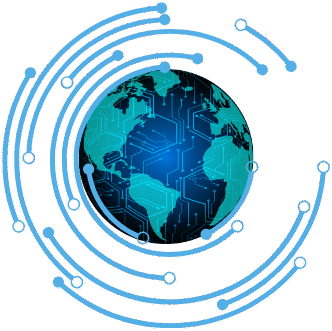Pekin Technology Park: An Economic Future on the Horizon
In an era where technological advancements drive economic growth, Pekin, Illinois, is poised to transform its economic landscape with the development of a new technology park. City officials are optimistic that this initiative will catalyze job creation, boost local revenue, and encourage further investment in the area, even as they acknowledge that the fruits of this investment may take some time to materialize.
### The Vision for Pekin Technology Park
The focal point of this ambitious project is the Lutticken property, a strategic acquisition by Pekin city officials. The city is set to sell approximately one-third of this 320-acre site to a technology park developer, whose primary aim is to establish data centers. As technology becomes increasingly integral to various sectors, the city is tapping into this growing trend, seeing the potential benefits that come from hosting such facilities.
Josh Wray, the head of Pekin’s economic development efforts, emphasizes the nationwide momentum behind data centers. “They’re going to happen everywhere, so our thought is why not Pekin?” he notes, highlighting the importance of positioning the city as a competitive player in the technology sphere. The project will be located off Highway 98 and Veterans Drive, marking a strategic move to attract business and improve infrastructure.
### Economic Impact and Job Creation
The anticipated economic impact of the Pekin Technology Park is significant. City officials project an influx of jobs not only from the operation of the data centers but also from the construction phase itself. Jobs in construction and related fields are expected to be available in the short term as infrastructure is laid down, while long-term positions in data management and technology services will follow once the centers become operational.
Moreover, the city forecasts an additional $20 million in yearly revenue from property taxes once the park is fully developed. This influx of revenue could allow the city to reinvest in public services, infrastructure improvements, and community programs, thereby enhancing the overall quality of life for its residents.
### A Cautious Outlook
Despite the optimism surrounding the Pekin Technology Park, it is essential to approach this venture with a dose of realism. There are inherent risks and challenges associated with such large-scale projects. The timeline for development is projected to span approximately two years, and during this period, the city must handle not only logistical issues but also navigate market fluctuations and the economic climate.
Additionally, the reliance on data centers as the primary economic driver raises questions about sustainability and diversification. While data centers are undeniably a growing trend, Pekin should strive to foster a broader economic base by attracting various types of businesses. This diversification will mitigate risks and create a more resilient local economy.
### Community Engagement and Expectations
Another critical component of this initiative is community engagement. As the city moves forward with this project, it is crucial for officials to keep residents informed and involved. Transparency about the benefits and potential drawbacks of the development will help manage expectations and foster public support. Residents should be encouraged to provide feedback and express their concerns, which can contribute to making the project more inclusive and beneficial for the entire community.
### Comparing with Other Regions
Looking at similar technology parks in other regions provides insights into the potential outcomes of the Pekin venture. Cities that have successfully developed technology parks have often seen rapid economic growth, increased job opportunities, and enhancement of local services. However, those experiences also highlight the need for long-term planning and support for businesses that may emerge in the aftermath of such projects.
For instance, cities like Austin, Texas, and Denver, Colorado, have embraced technology parks and reaped the rewards of job creation and substantial economic growth. However, these cities have also faced challenges such as increased living costs and infrastructure strains. Pekin can learn from these examples, aiming to prepare for the potential impacts on its own community.
### Long-term Vision and Goals
Ultimately, the success of the Pekin Technology Park will depend on having a clear long-term vision. It is essential for city officials and developers to establish goals beyond just short-term job creation. Identifying key performance indicators, such as job retention rates, economic diversification, and community satisfaction, can help gauge the success of the initiative.
Moreover, integrating education and training programs into the overall plan can be a game-changer. By investing in workforce development aligned with the skills needed for technology jobs, Pekin can ensure its residents are prepared to take advantage of new opportunities. This strategic alignment can serve as a blueprint for future growth, allowing Pekin to evolve alongside changing technological landscapes.
### Conclusion
In summary, the Pekin Technology Park holds promise as a transformative economic driver for the community. While the anticipated benefits may still be years away, the groundwork is being laid for a strategic shift toward a technology-centric economy. By actively engaging the community, learning from regional counterparts, and maintaining a long-term vision, Pekin can aspire to realize a future where the technology park not only fulfills its economic potential but also enhances the well-being of its residents.
As this project unfolds, it will be essential to monitor its progress carefully, keeping the lines of communication open between local government, developers, and residents to ensure that Pekin is not only investing in technology but also investing in its future.
Source link









